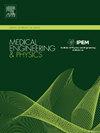在骨髓间充质干细胞中,富含MXene V2C的磺化聚醚酮通过WNT/β-catenin信号通路促进骨形成
IF 2.3
4区 医学
Q3 ENGINEERING, BIOMEDICAL
引用次数: 0
摘要
在人工关节置换术中,假体松动是一种灾难性的术后并发症,导致严重的患者发病率和大量的医疗费用。本研究旨在开发一种防止假体松动的新策略。合成了二维MXene V2C纳米片,随后用聚多巴胺(PDA)固定在三维多孔磺化聚醚醚酮(SPEEK)表面,形成V2C-PDA@SPEEK(简称V2C-PDA@SPEEK)。V2C-PS)。采用大鼠骨髓间充质干细胞(rBMSCs)和小鼠模型对其生物相容性进行了系统评价。采用实时荧光定量PCR、碱性磷酸酶(ALP)染色、茜素红染色检测V2C-PS成骨分化潜能。在大鼠股骨模型中,采用显微ct分析、生物力学拔出试验、新形成骨的顺序荧光标记和Van Gieson染色来评估植入材料周围V2C-PS的体内成骨能力。通过化学抑制剂、β-catenin shRNA慢病毒沉默和β-catenin mRNA慢病毒过表达,在体外和体内研究了V2C-PS介导的rBMSCs成骨分化的分子机制。结果表明,V2C-PS具有良好的生物相容性。定量分析显示大量上调(p <;与PS组相比,25V2C-PS治疗组的关键成骨标志物包括RUNX2(4.4倍)、COL-1(5.7倍)、OCN(3.3倍)、BMP-2(4.4倍)、OPN(3.1倍)、BSP(3.3倍)、ON(4.3倍)和OSX(2.83倍)。25V2C-PS组骨密度增加241%,骨与种植体接触增加159%,BV/TV增加225%,Tb增加225%。N乘以281% Tb。最大拔出力提高214%,最大拔出力提高250%。Sp降低33%)。此外,研究发现V2C-PS通过激活Wnt/β-catenin信号通路促进rBMSC成骨分化。本研究提出了一种预防矫形假体松动的有希望的方法,并展示了临床翻译的重大潜力。本文章由计算机程序翻译,如有差异,请以英文原文为准。
Sulfonated polyetheretherketone enriched with MXene V2C promotes bone formation via WNT/β-catenin signaling in bone marrow mesenchymal stem cells
Prosthetic loosening represents a catastrophic postoperative complication in artificial joint replacement, resulting in severe patient morbidity and substantial healthcare costs. This investigation aimed to develop a novel strategy for preventing prosthetic loosening. Two-dimensional MXene V2C nanosheets were synthesized and subsequently immobilized onto three-dimensional porous sulfonated polyetheretherketone (SPEEK) surfaces with polydopamine (PDA) to form V2C-PDA@SPEEK (Abbrev. V2C-PS). The biocompatibility was systematically evaluated using rat bone marrow mesenchymal stem cells (rBMSCs) and murine models. The osteogenic differentiation potential of V2C-PS was assessed through real-time PCR analysis, Alkaline phosphatase (ALP) staining, and Alizarin Red staining. The in vivo osteogenic capacity of V2C-PS surrounding the implant material was evaluated in rat femoral models using micro-CT analysis, biomechanical pull-out testing, sequential fluorescent labeling of newly formed bone, and Van Gieson staining. The molecular mechanisms underlying V2C-PS -mediated osteogenic differentiation of rBMSCs were investigated both in vitro and in vivo using chemical inhibitors, β-catenin shRNA lentiviral silencing, and β-catenin mRNA lentiviral overexpression. The results demonstrated that V2C-PS exhibited excellent biocompatibility. Quantitative analysis revealed substantial upregulation (p < 0.05) of critical osteogenic markers, including RUNX2 (4.4-fold), COL-1 (5.7-fold), OCN (3.3-fold), BMP-2 (4.4-fold), OPN (3.1-fold), BSP (3.3-fold), ON (4.3-fold), and OSX (2.83-fold), in the 25V2C-PS treatment group compared to PS group. The bone parameters were also remarkably enhanced in the 25V2C-PS group (BMD increased by 241 %, bone-implant contact by 159 %, BV/TV by 225 %, Tb.N by 281 %, Tb.Th by 214 %, maximum pull-out force by 250 %, and Tp.Sp decreased by 33 %). Furthermore, V2C-PS were found to enhance rBMSC osteogenic differentiation through activation of the Wnt/β-catenin signaling pathway. This study presents a promising approach for preventing orthopedic prosthetic loosening and demonstrates significant potential for clinical translation.
求助全文
通过发布文献求助,成功后即可免费获取论文全文。
去求助
来源期刊

Medical Engineering & Physics
工程技术-工程:生物医学
CiteScore
4.30
自引率
4.50%
发文量
172
审稿时长
3.0 months
期刊介绍:
Medical Engineering & Physics provides a forum for the publication of the latest developments in biomedical engineering, and reflects the essential multidisciplinary nature of the subject. The journal publishes in-depth critical reviews, scientific papers and technical notes. Our focus encompasses the application of the basic principles of physics and engineering to the development of medical devices and technology, with the ultimate aim of producing improvements in the quality of health care.Topics covered include biomechanics, biomaterials, mechanobiology, rehabilitation engineering, biomedical signal processing and medical device development. Medical Engineering & Physics aims to keep both engineers and clinicians abreast of the latest applications of technology to health care.
 求助内容:
求助内容: 应助结果提醒方式:
应助结果提醒方式:


